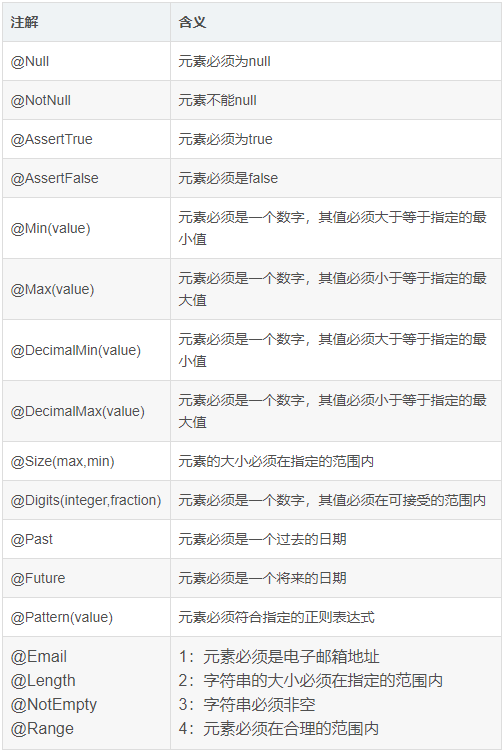面试官:说说 Spring 中 @NotEmpty、@NotBlank、@NotNull 的区别和使用
1、引入依赖<dependency><groupId>org.springframework.boot</groupId><artifactId>spring-boot-starter-web</artifactId><version>2.0.5.RELEASE</version></dependency>@NotEmpty、@NotBlank、@NotNull 包的位置:import javax.validation.constraints.*;
2、区别
@NotNull
适用于基本数据类型(Integer,Long,Double 等等),当 @NotNull 注解被使用在 String 类型的数据上,则表示该数据不能为 Null(但是可以为 Empty)
注:被其标注的字段可以使用 @size、@Max、@Min 对字段数值进行大小的控制
@NotBlank 适用于 String 类型的数据上,加了 @NotBlank 注解的参数不能为 Null 且 trim() 之后 size > 0,必须有实际字符
@NotEmpty 适用于 String、Collection 集合、Map、数组等等,加了 @NotEmpty 注解的参数不能为 Null 或者 长度为 0
3、使用方法
@Datapublic class BigPeople {@ApiModelProperty(value = "id" ,required = true)@NotNull(message = "id 不能为空")@Length(message = "id 不能超过{max}个长度",max = 10)private Integer id;
}@Valid 包位置:
import javax.validation.Valid;@Validated 包的位置
import org.springframework.validation.annotation.Validated;@ApiOperation(value = "新增或者修改一个人的信息")@PostMapping("/updateOrInsert")public Result updateOrInsert(@Valid @RequestBody Person person){Boolean updateOrInsert = personService.updateOrInsert(person);if (updateOrInsert) {return new Result(ResultCode.SUCCESS,updateOrInsert);}return new Result(ResultCode.ERROR, "新增或者修改一个人的信息失败");}
@ApiOperation(value = "新增或者修改一个人的信息")@PostMapping("/updateOrInsert")public Result updateOrInsert(@Validated @RequestBody Person person){Boolean updateOrInsert = personService.updateOrInsert(person);if (updateOrInsert) {return new Result(ResultCode.SUCCESS,updateOrInsert);}return new Result(ResultCode.ERROR, "新增或者修改一个人的信息失败");}最上面三个注释:必须需要搭配 @Valid 或者 @Validated 使用,在检验 Controller 的入参是否符合规范时
@Valid 和 @Validated 比较
最后我们来对 @Valid 和 @Validated 两个注解进行总结下:
1:@Valid 和 @Validated 两者都可以对数据进行校验,待校验字段上打的规则注解(@NotNull, @NotEmpty 等)都可以对 @Valid 和 @Validated 生效;
2:@Valid 进行校验的时候,需要用 BindingResult 来做一个校验结果接收。当校验不通过的时候,如果手动不 return ,则并不会阻止程序的执行;
3:@Validated 进行校验的时候,当校验不通过的时候,程序会抛出 400 异常,阻止方法中的代码执行,这时需要再写一个全局校验异常捕获处理类,然后返回校验提示。
4:总体来说,@Validated 使用起来要比 @Valid 方便一些,它可以帮我们节省一定的代码,并且使得方法看上去更加的简洁。
此包下其它常用的校验注解:












评论